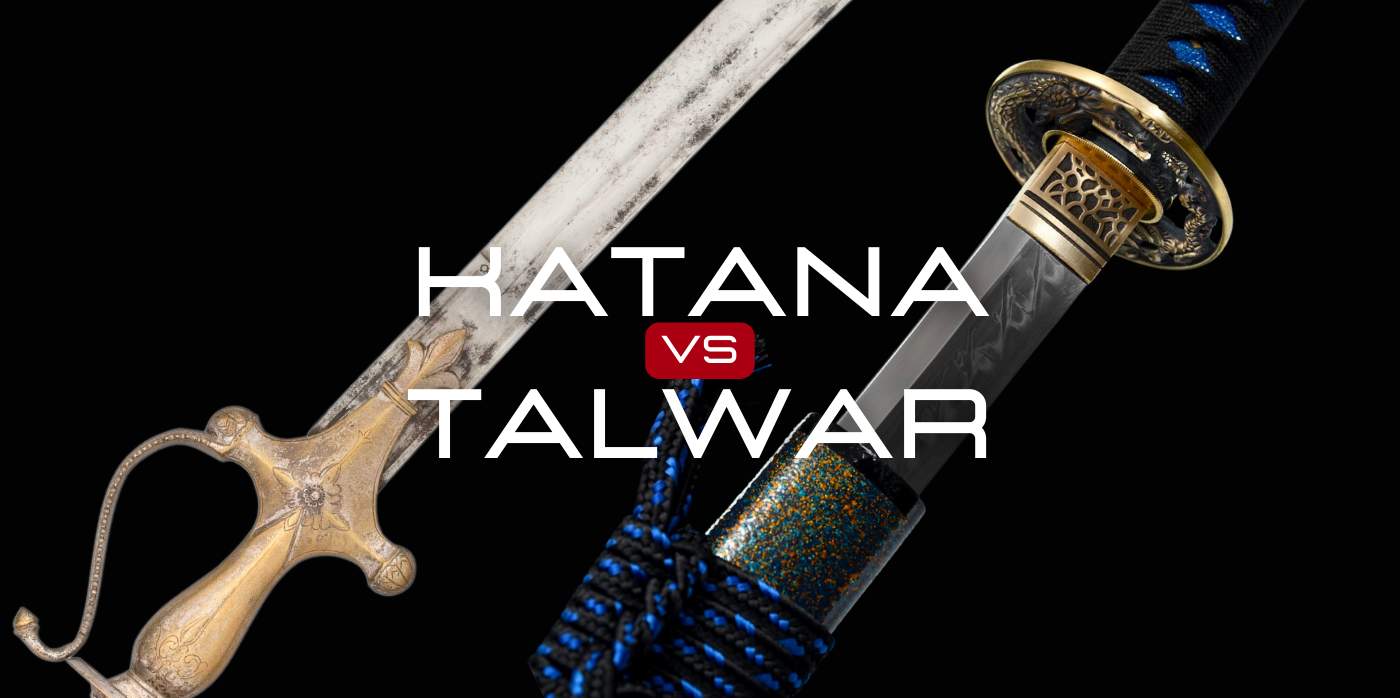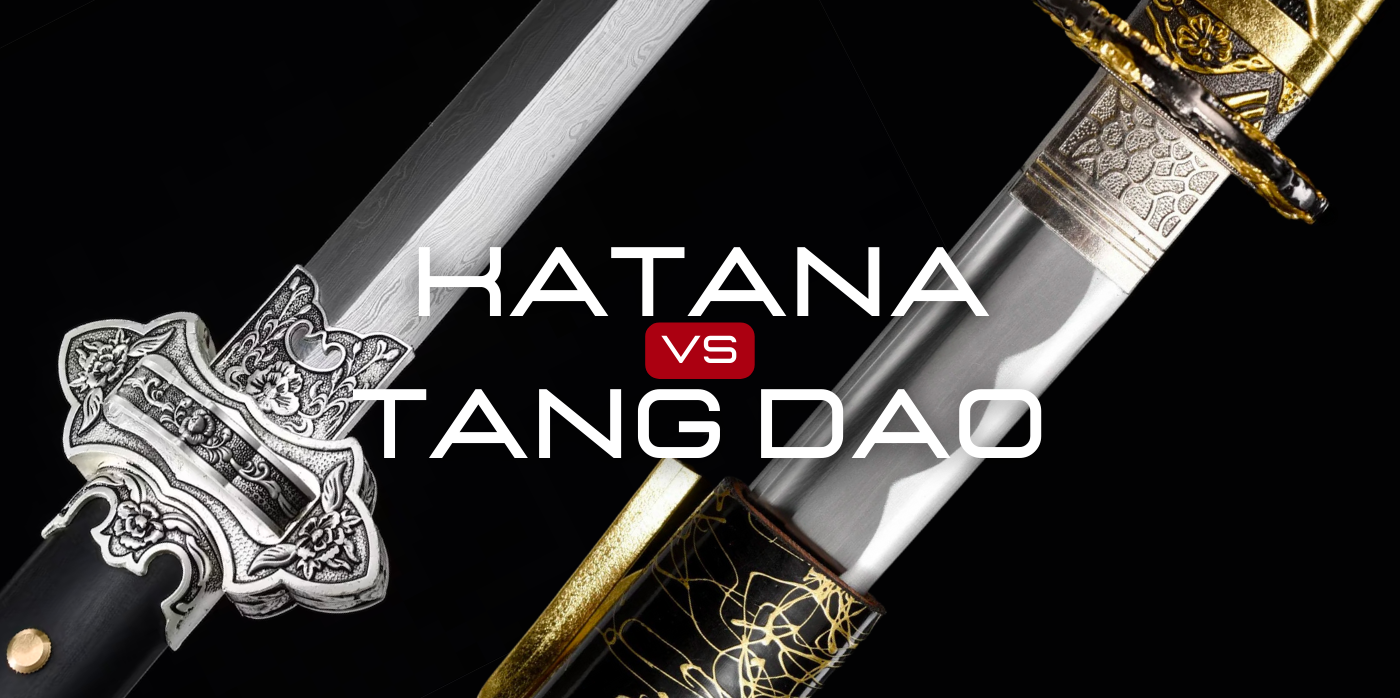In the vast spectrum of traditional swords, the Japanese Katana and the Indian Talwar hold significant places due to their historical importance and unique design. Both blades emanate from distinct cultural milieus and have been instrumental in shaping the military history of their respective regions. In this analysis, we'll dive into a comparative study of the Katana and the Indian Talwar, exploring the aesthetics, functionality, and the enduring legacy of these remarkable swords.
What is an Indian Talwar
The Indian Talwar (also spelled Talvar) is a traditional type of sword from the Indian subcontinent. It is known for its curved blade and is a prominent weapon in many historical Indian and Persian battle narratives. The Talwar was a popular weapon among Indian and Persian warriors and was often a symbol of honor and martial skill. Various Indian kingdoms and empires utilized the Talwar in warfare. The Talwar holds a cultural significance in many traditional Indian martial arts and is often depicted in historical and mythological narratives across the subcontinent.

Katana Vs Talwar Design and Aesthetics
Katana: The Samurai’s Choice
The Katana, revered as the samurai's sword, boasts a distinct design. Its signature feature is the gentle curve, which facilitates a smooth draw and a clean cut. Crafted meticulously with a single-edged blade, the Katana embodies a blend of aesthetic finesse and lethal efficiency. The process of forging a Katana is an art in itself, showcasing the legendary Japanese blacksmithing skills. Its tsuba (hand guard) is often adorned with intricate designs, reflecting the cultural and individual expression of the samurai who wields it.
Talwar: The Blade of Indian Warriors
On the other side, the Indian Talwar holds a unique place in the subcontinent’s military heritage. With a wider curve and often a double-edged blade, the Talwar is designed for both slashing and thrusting. Its hilt is distinct, usually featuring a disc-shaped pommel and a cross-guard. The crafting process, although less ceremonial than that of the Katana, embodies the rich metalworking traditions of the Indian subcontinent. The Talwar's aesthetics mirror the diverse cultural essence of India, with blades often embellished with inscriptions and precious stones.
Katana Vs Talwar Battlefield Functionality
Combat Efficiency of Katana
In battle, the Katana shines with its razor-sharp edge capable of delivering clean cuts. The elongated grip provides ample room for two-handed use, granting the samurai control and precision. The balance and lightweight nature of the Katana make it a deadly companion in close-combat scenarios.
Talwar’s Versatility
Conversely, the Talwar offers a level of versatility with its broader blade and substantial curve, effective in both slashing and thrusting movements. Its robust construction makes it a durable choice in the chaos of the battlefield.

Katana Vs Talwar: Legacy and Cultural Significance
Both the Katana and the Indian Talwar have left enduring imprints on the martial heritage of their regions. While the Katana is a symbol of the samurai spirit and the meticulous craftsmanship of feudal Japan, the Talwar reflects the valiant history and the diverse cultural essence of the Indian warriors.
Summary
| Characteristics | Katana | Indian Talwar |
| Period | Kamakura period (1185-1333 CE) | 14th Century |
| Blade shape | Curved blade with a single edge | Curved blade with a single edge |
| Blade Length | 60 to 80 cm) | 75 to 90 cm) |
| Handle design | Long handle allowing a two-handed grip, with a T-shaped guard | Shorter handle with a cross-guard and a disc or knuckle guard |
| Material | Laminated steel, often with a clear distinction between the tempered edge and the rest. | Traditional crucible steel, with regional variations in quality and decoration. |
| Usage | Primarily used by samurai for close combat, known for precise and clean cutting. | Used by various warriors and soldiers across the Indian subcontinent, effective for cutting and thrusting movements. |
In conclusion, comparing the Katana and the Indian Talwar is more than a mere examination of steel; it’s a glimpse into the rich historical and cultural tapestries from which these legendary blades emerged. Each sword tells a story of valor, tradition, and the timeless quest for mastery in metalworking that transcends geographical and cultural bounds.



